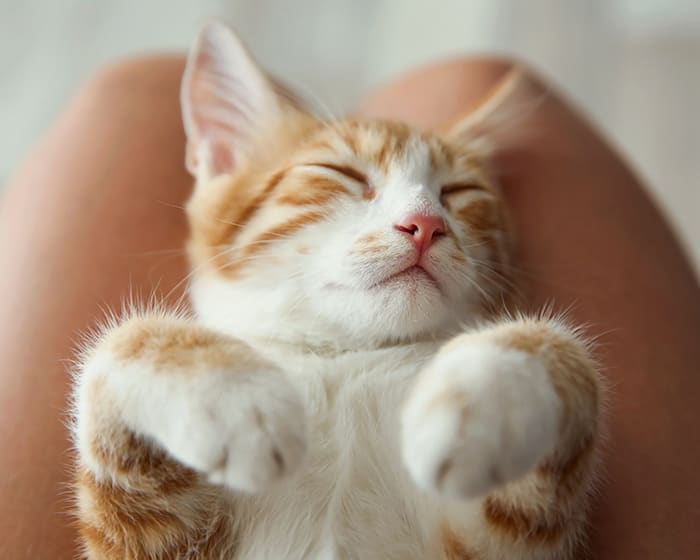
Rehabilitative Treatments for Pets
Throughout their treatment session, your pet will receive targeted therapy in a relaxed and comfortable environment.
We are fully equipped to develop a custom rehabilitation program tailored to your pet's condition and requirements, ranging from manual therapeutic techniques to low-impact aquatic therapy.
What to Expect During Rehabilitation Sessions
Our skilled therapy and rehabilitation teams can design an individualized treatment plan for your pet based on his or her unique needs. In-house therapy may consist of a variety of techniques, exercises, and modalities.
We will also develop a home exercise program for all rehabilitation patients so that you may participate in your pet's recovery.
Rehabilitative Treatments & Therapy Options for Pets
A customized physical rehabilitation program may include the following therapeutic techniques:
- Therapeutic Physical Exercise
Exercise is the foundation of any successful physical rehabilitation program. All pets can benefit from a therapeutic exercise program. We can accomplish the following through targeted physical exercises:
- Improve muscle mass and strength
- Prevent or reverse osteoporosis
- Increase circulation
- Decrease pain
- Reduce obesity
- Improve function and mobility
- Improve flexibility and range of motion
- Improve balance and proprioception
- Increase endurance and stamina
- Underwater Treadmill
Underwater treadmill is a versatile, low impact modality which provides a number of benefits, including increased joint mobility and muscle activation as well as improved motor patterns, proprioception, and endurance. Water's buoyancy properties reduce weight bearing stress and improves pain and inflammation associated with impact loading exercises.
Underwater Treadmill is beneficial for the following conditions:
- Post-operative orthopedic procedures
- Neurological conditions
- Osteoarthritis patients
- Overweight patients
- Strength and conditioning
By varying the water level, the underwater treadmill promotes controlled weight-bearing, and resistance. This is especially beneficial for osteoarthritis and neurological conditions that cause weakness.
Swimming is not recommended immediately following many surgical procedures; the treadmill may be a better option.
Our therapy team will assist you in determining which is the most appropriate for your pet's condition.
- Cryotherapy
In rehabilitation, cryotherapy uses ice with or without compression to reduce tissue temperatures, and decrease soft tissue perfusion. This reduces edema, swelling, and inflammation, resulting in pain relief. It is most commonly used in acute post-operative patients.
- Extracorporeal Shockwave Therapy
ESWT is a form of mechanotherapy that delivers low frequency acoustic waves into the tissue to stimulate a series of cellular events. These events ultimately result in anti-inflammation, new blood vessel growth, an increase in bone metabolism, and pain relief. It is beneficial for treatment of the following:
- Desmitis/Tendinitis
- Arthritis
- Delayed nonunion fractures
- Lumbosacral disease
- Laser Therapy
Laser therapy or "photobiomodulation" is a noninvasive therapy using light at varying wavelengths to stimulate cells and tissues. It contributes to pain relief, reduces inflammation, and enhances tissue repair. It is used for the treatment of many conditions, including the following:
- Wound healing
- Dermatitis
- Neurologic function
- Desmitis/Tendinitis
- Arthritis
- Therapeutic Ultrasound
Therapeutic ultrasound delivers high frequency acoustic waves into tissues to promote energy production. It is used for treatment of the following:
- Tenosynovitis
- Joint Contractures
- Wounds
- Muscle spasms
- More
- Manual Therapy
Manual therapy includes stretching, massage, joint mobilizations, and range of motion exercises.
VRA also offers instrument-assisted myofascial techniques.
Manual therapy provides the following benefits to your pet:
- Reduces muscle tension
- Improves joint mobility
- Improves flexibility
- Reduces pain and edema
- Kinesiology Taping
Kinesiology taping provides sensory input to improve proprioception. It is also used to improve lymphatic drainage and to alter muscle performance.
Therapeutic Treatment FAQs
Read our most frequently asked questions about treatment and therapy for pets, or contact us to ask a different question.
- Why does my pet need rehabilitation?
Rehabilitation is critical for your pet's recovery, regardless of whether they've suffered trauma, surgery, chronic pain, neurological condition, or another ailment.
We can focus on pain management and overall health while achieving your pet's goals, which may include improving their balance and coordination, endurance, and strength.
All of these factors contribute to healing, as well as injury prevention, with the ultimate goal of ensuring your pet feels their best and the two of you enjoy many more years together.
- What conditions can rehabilitation be used to treat?
Rehabilitation can be used to treat a variety of conditions that your pet may have, including the following:
- Osteoarthritis
- Recovery after major surgery (hip surgery, cruciate repair, limb amputation, etc.)
- Spinal injuries
- Disc disease (IVDD)
- Degenerative neurologic conditions
- Soft tissue injuries
- Obesity
- Chronic pain
- What can I do at home to achieve the best results possible from rehabilitation?
At-home exercises helps to promote healing and progress in rehabilitation.
Your rehabilitation practitioner will develop a video-guided home exercise program based on your pet's needs so that you may continue your pet's therapy at home between sessions.
- Does pet insurance cover treatment rehabilitation?
Many pet insurance companies offer riders or add-ons to cover any potential rehabilitation therapy. Please doublecheck with your insurance provider whether your pet is covered.
- How long is rehabilitation?
Following a comprehensive evaluation of your pet, one of our rehabilitation therapists will meet with you to review their findings and recommendations. At VRA, rehabilitation sessions can be purchased individually or in packages. Each session is approximately one hour in duration.
